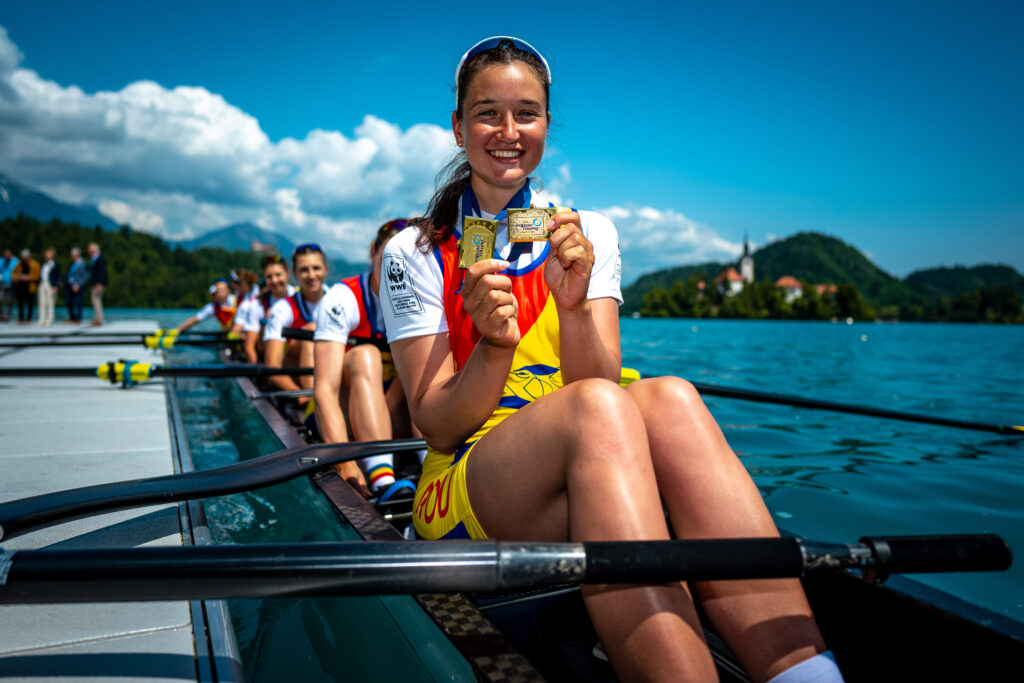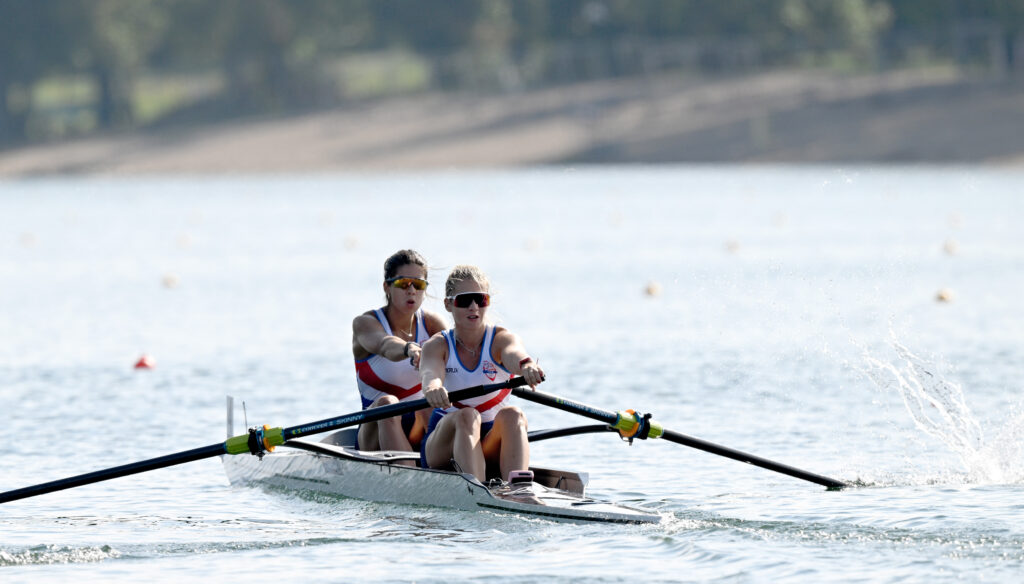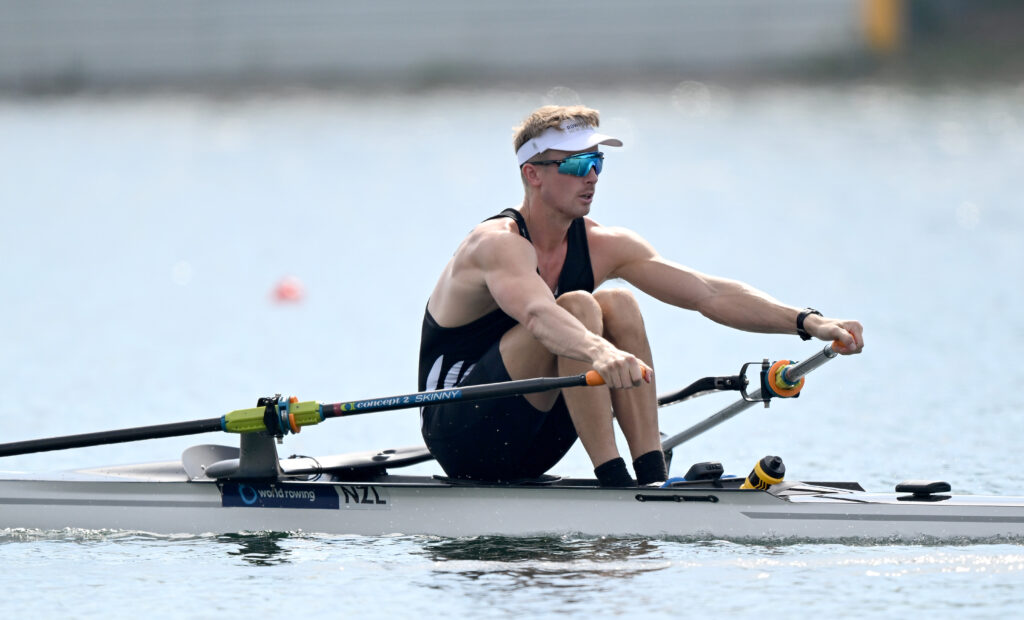
07 Sep 2023
One oar or two? Rowing’s discipline-switchers
It’s easy to get pigeonholed in rowing and become either a sculler, or a sweeper. As a result, those who are equally skilled at both sculling and sweep are relatively rare.

At last year’s World Rowing Championships in Racice, Romanian Simona Radis became world champion in both the women’s double sculls and women’s eight. Croatia’s Sinkovic brothers, Martin and Valent, are another example of rowers who have excelled in both disciplines, with Olympic and world titles in the men’s pair and men’s double sculls.
This season several top rowers have switched from sculling to sweep or vice-versa – either at the start of the season, or even halfway through it.
“It’s definitely been a bit of a challenge going from rowing the eight last year to sculling, adding that extra oar – one more thing to think about,” says Australia’s Henry Youl, who has moved from the men’s eight to the quadruple sculls via a short stint in a single.
New Zealander Tom Mackintosh has also shifted from sweep to sculling: after winning gold in the men’s eight at the Tokyo 2020 Olympic Games, he spent last season in a pair, but is now racing the single scull.
“The way I compare it is, rowing the eight it’s big, it’s aggressive. There’s a margin for error in the sense that to get an eight going you need to throw your weight around and pull on the oar as hard you possibly can. We figured that out with that Tokyo eight to the point where we were just reefing on that oar, we were like maximal output every stroke,” Mackintosh says.
“You try to do that in the single and you’ll last 500m, it doesn’t quite work. The eight’s like a five-round boxing match where you’re just throwing haymakers the whole time; the single’s a bit more of a dance, I guess. You need horsepower and what not, but it feels a bit more dainty and acute and tighter in that sense,” he adds.

But is making the shift difficult? Alejandra Alonso, of the Paraguay women’s pair, thinks not.
“I didn’t find it that hard to switch from sculling. It’s literally the same, you just have to rotate to one side,” she says.
Mackintosh agrees, although he says you need a bit of time to adapt properly.
“My first few sessions in the single when I was coming back was row in private, don’t let anyone see. It was a bit unbalanced, I probably wasn’t getting to full slide the whole time, the catch was a bit loose, and oars are still on the water – they still are at times – but rowing’s rowing.
“At the end of the day, you put your oar in at the catch, take it out at the finish and just try and lean on it in between. If you break it down to a simple structure like that you don’t get as confused when trying to row different boat classes,” he explains.
Youl says sculling is clearly more technical, because of the extra oar. He thinks in a quad in particular it is important to stay relaxed.
“Don’t try to overwork it, staying loose, do it all out front in front of the pin. I’m trying to work it out and hopefully I’ll find the secret to that this week and go from there,” he says.
Greece’s Evangelia Anastasiadou, who has made her name as a promising young lightweight sculler but is currently racing the women’s pair with Christina Bourmpou, says she has found the pair challenging.
“I’m still lightweight, but I’m very lucky that I have a great partner that helps me a lot. Compared with sculling I think it’s more difficult. It’s one oar and it’s heavy,” she says.

There are different reasons to switch – for example, Alonso found a pairs partner in the shape of Nicole Martinez, giving her the opportunity to try sweep. Mackintosh was coming back to the squad late after a break, so single sculling made more sense.
But which would they choose if they could only do sculling or sweep for the rest of their careers?
“Right now I would say that I would pick the pair. Rowing a team boat is kind of a relationship, you have to find a team boat to row that has the same goal, the same purpose, and also they give the same amount of time,” Alonso says.
Despite being in a sculling boat in Belgrade, Youl is also in the sweep camp.
“I do like sweep rowing, there’s something about it. The scullers will probably hate that I said that,” he says, hurrying to add that he does love the quad. “Some might say I’m silly because my height’s lacking so I should go sculling, but I had fun in the eight last year, so I’ll go with sweep.”
Mackintosh is team two oars.
“I’d probably go sculling, because I’ve achieved all I ever set out to in the sweep boat classes,” he points out.
It will be fascinating to see how deep into the regatta the discipline-switchers can go, and whether they will join the likes of Radis and the Sinkovics in becoming world medallists in both sculling and sweep.

